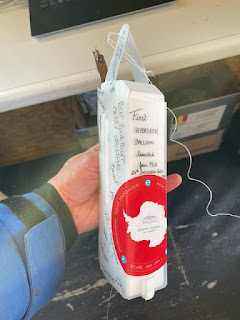The Paspartout project has been present at Princess Elisabeth Station during Belare 2024-2025. Our team member Paula Lamprea of Ghent University has been at the station from 11 January to 14 February 2025. She managed to complete all tasks. Below there is a short report by her on this work. This Belare season was very successful. Besides Paula's work near the coast, she re-installed the total particle number concentration counter at the station. This instrument is very sensitive and can measure also very very low particle numbers, but also high concentrations. It gives a good view on atmospheric processes going on. Our Brewer ozone spectrophotometer has also been re-installed and maintained. This season has seen no exceptionally large ozone hole (luckily). But because fhe future evolution of stratospheric ozone remains uncertain, ground-based ozone reference measurements like the ones at the station, will continue to be essential for evaluating the impacts of the Montreal Protocol, climate change, and related shifts in atmospheric chemistry, such as those caused by major wildfires. Another important step forward has been that the station operator acquired an hydrogen generator. The hydrogen produced by wind and solar energy has been used for filling the meteorological balloons for radio soundings. This self-produced hydrogen will replace the helium used up to now and it replaces also the costly and heavy shipping of the helium bottles. More about the station can be found here.



No comments:
Post a Comment